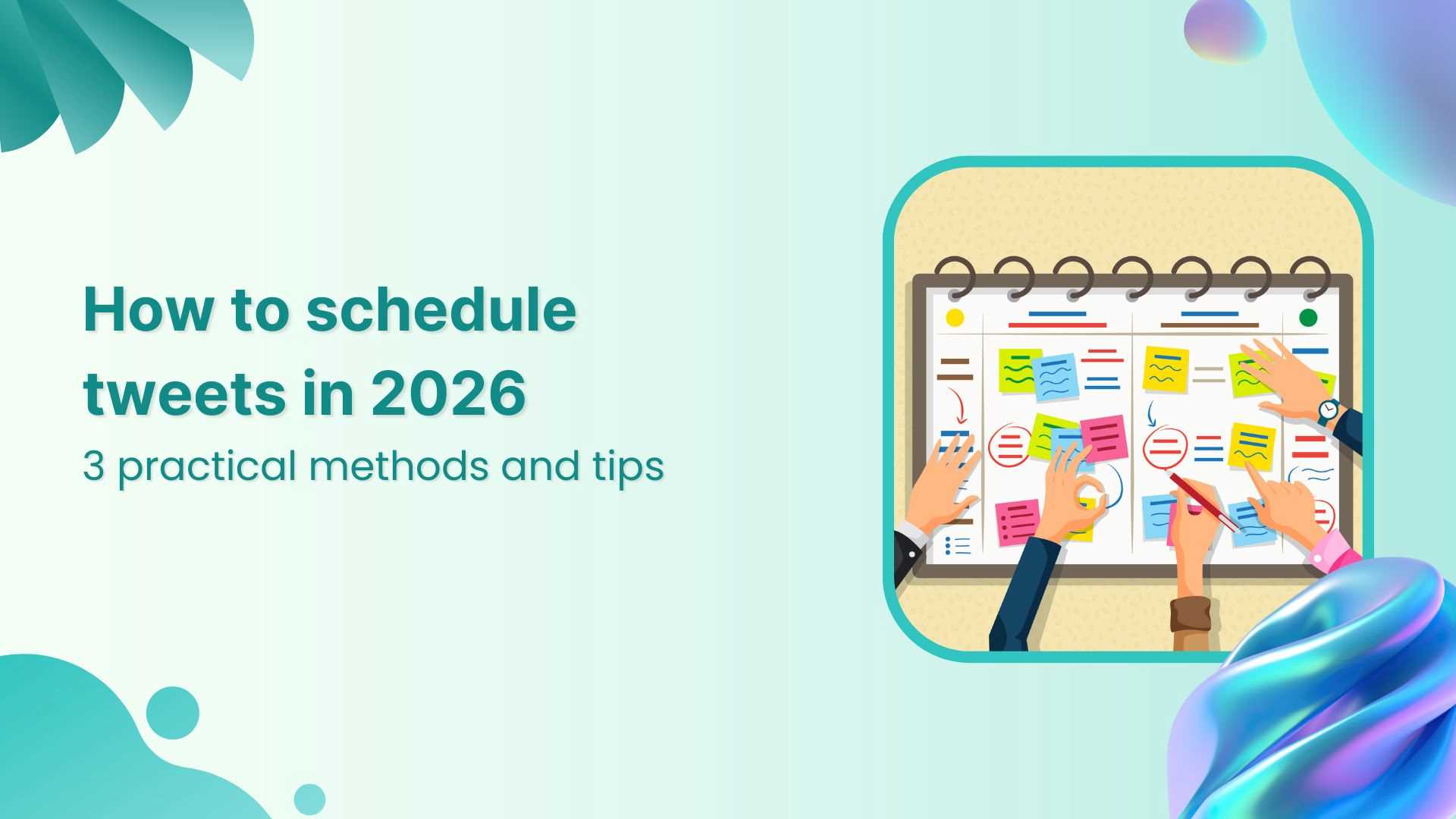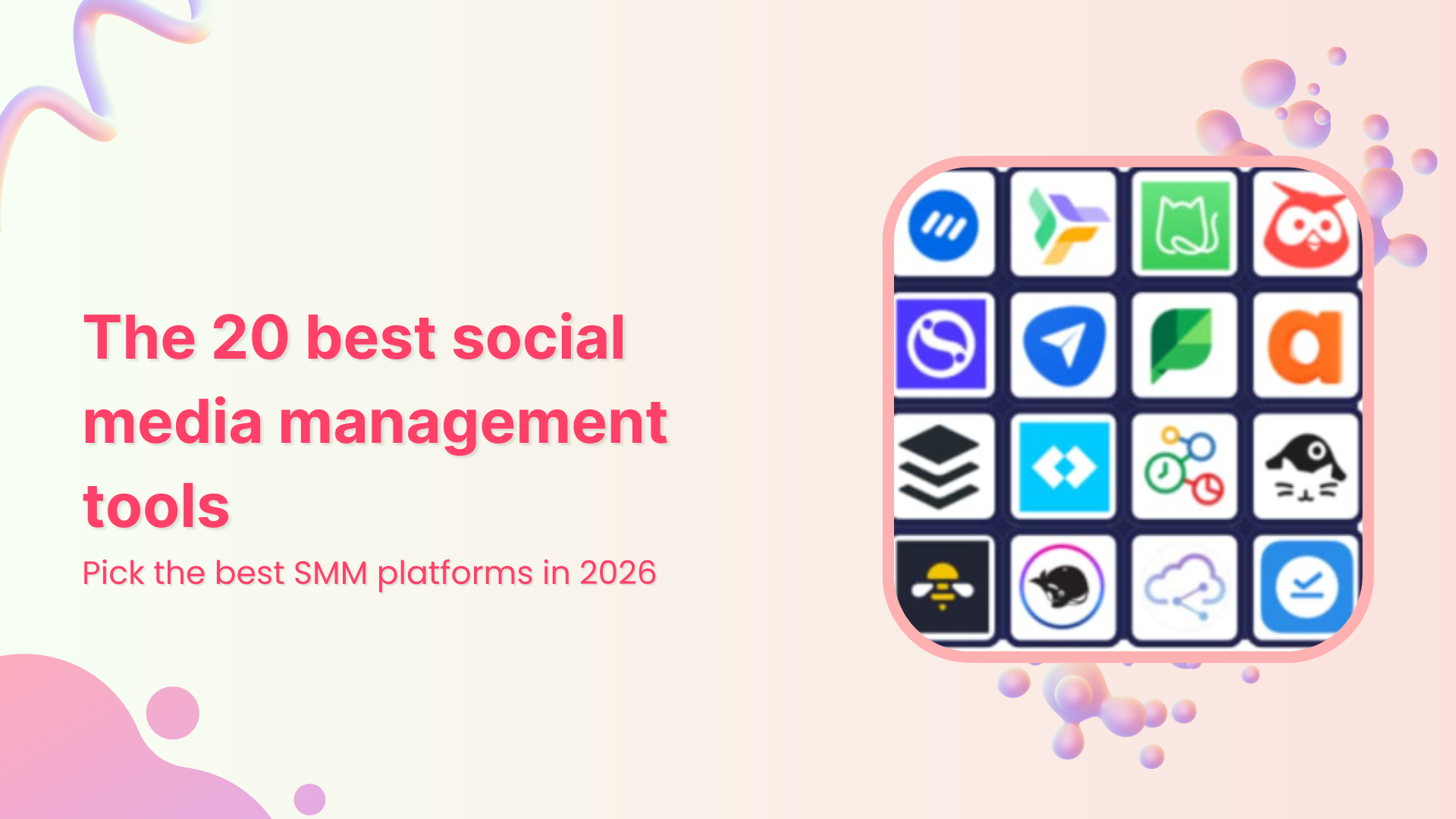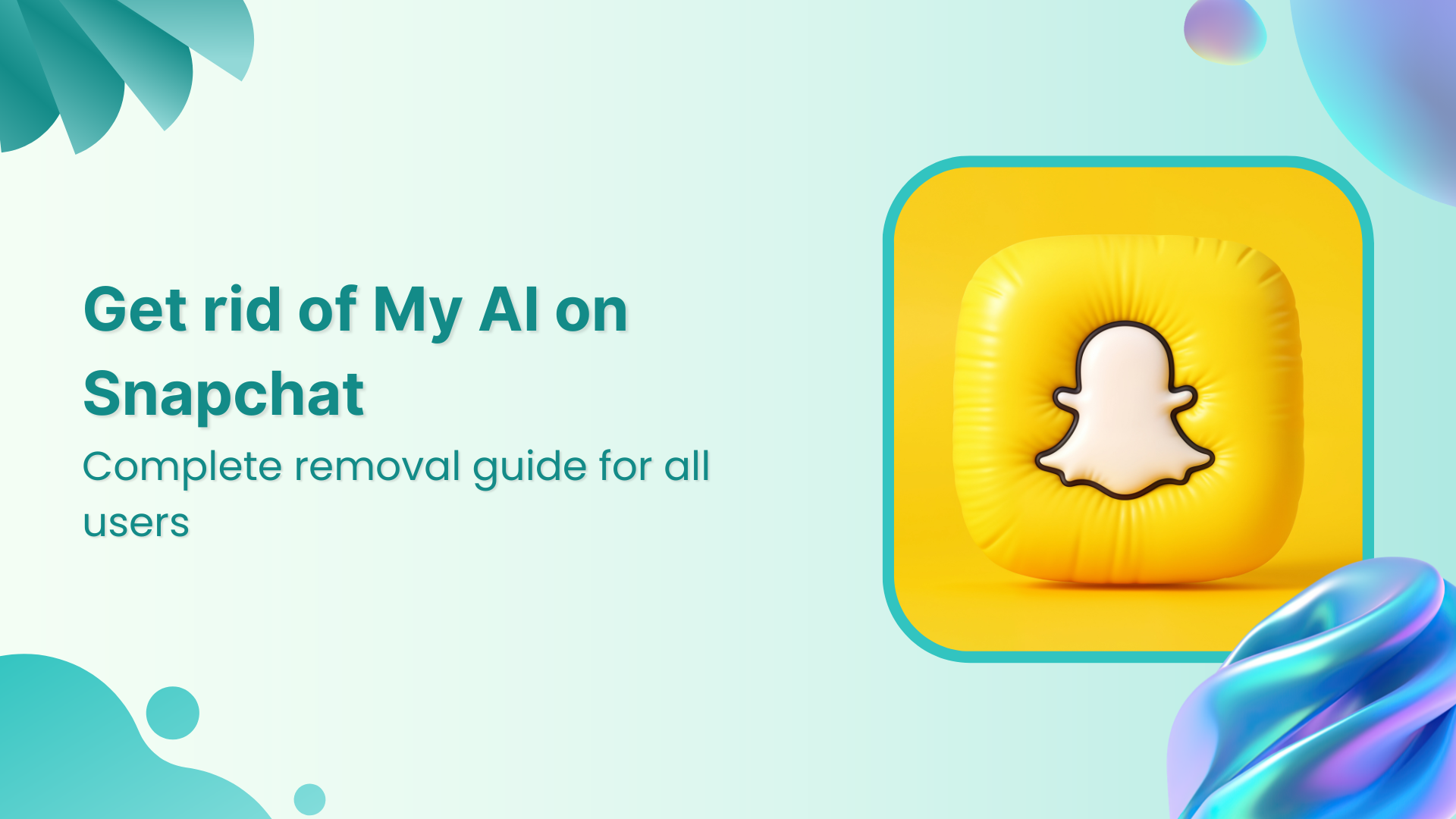Bulk-generate & schedule posts in seconds with Smart Scheduling. Try now!
Social media automation: How to save time & boost engagement?
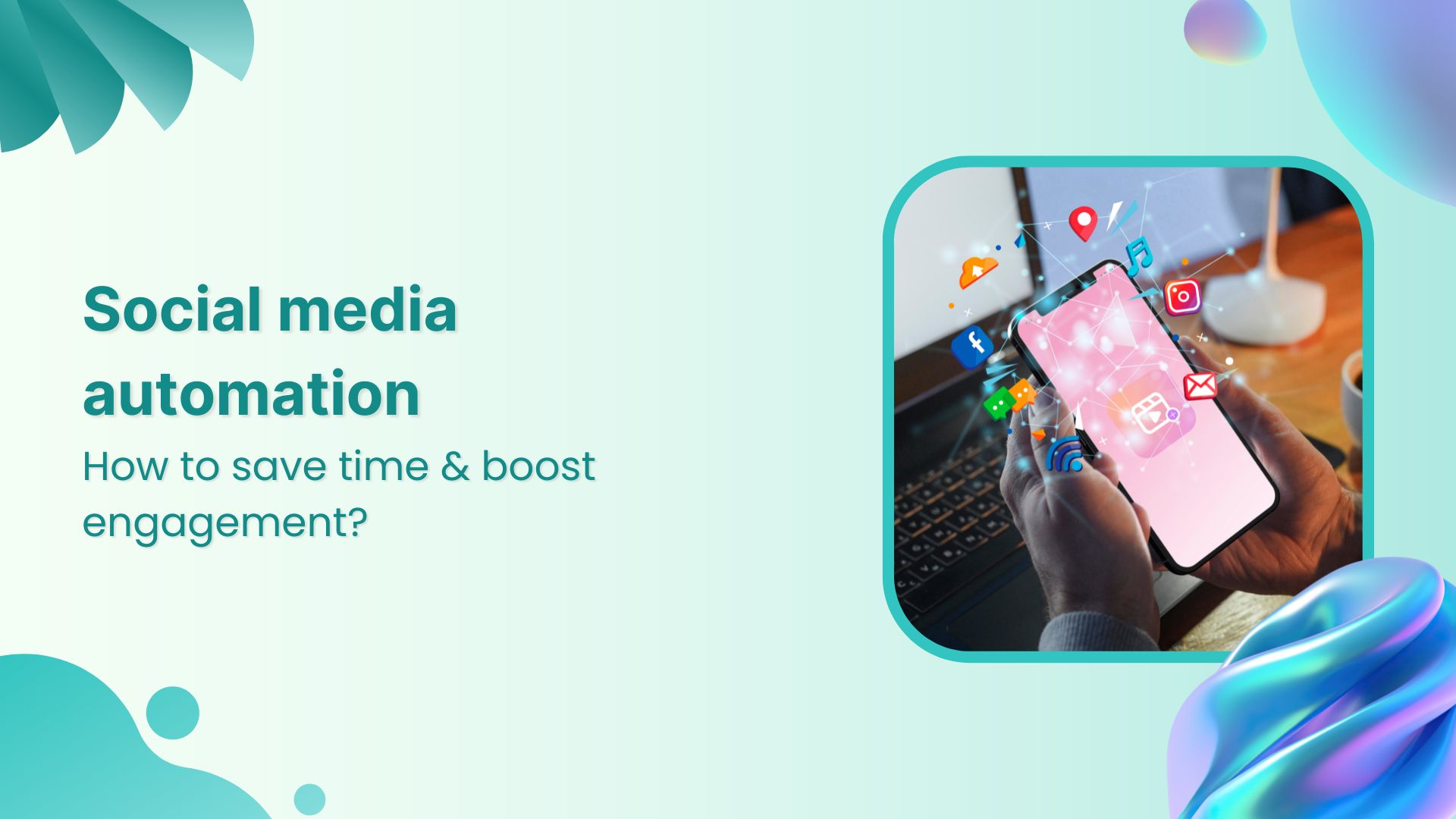
Maintaining a strong online presence has become crucial for businesses, placing significant pressure on social media managers and business owners. With numerous platforms, diverse content types, and increasingly high audience expectations, managing social media has never been more demanding.
As of 2025, there are an estimated 5.24 billion social media users worldwide, with the average person active on nearly seven different networks. It’s no surprise that 93% of marketers plan to allocate more time to social media marketing. Keeping up with multiple platforms, constantly creating content, and engaging in real-time is a significant undertaking. This is where social media automation comes in – helping you stay consistent, efficient, and focused on strategy rather than getting bogged down by daily posting tasks.
What is social media automation?
Social media automation is the process of using software and tools to handle social media tasks with minimal human intervention. Put simply, it means outsourcing repetitive, manual tasks to software. Instead of manually executing every action, marketers can set up systems that automatically publish and manage content on their behalf.
Common examples include scheduling posts in advance (e.g. queuing up a week’s worth of Facebook or Instagram updates), configuring auto-replies or chatbots to handle basic customer inquiries, and curating content via algorithms that surface relevant articles to share. Automation can also extend to social listening (monitoring brand mentions), tracking analytics, and even generating content suggestions. The goal is to streamline your workflow and maintain a consistent brand presence, freeing you to focus on high-level strategy and creativity. For busy entrepreneurs and social teams, it means you can keep your profiles active without being online 24/7.
Benefits of social media automation
Embracing social media automation offers numerous advantages. Here are seven key benefits:
Time savings
Automation tools take over many of the manual, repetitive tasks that used to eat up hours of a social media manager’s day. By scheduling posts in batches or using features like bulk uploading, you dramatically cut down daily busywork. One study found that companies can save more than 6 hours a week by automating their social media content and ads. All those hours add up – and can be reinvested into higher-value activities like planning campaigns or engaging with customers. In fact, 78% of marketers report that AI and automation have given them more time to focus on creativity in their work.
Consistency in posting
Successful social media marketing hinges on regular, timely content. Posting consistently (e.g. daily or at optimal times each week) keeps your brand visible in crowded feeds and helps build trust with your audience. However, manually meeting every deadline can be challenging – especially if you manage multiple accounts or have other business responsibilities. Automation solves this by letting you plan and queue content ahead of time, ensuring you never miss a scheduled post.
Social platforms’ algorithms also reward active, consistent accounts; by maintaining a steady presence you boost your chances of being seen. For example, if your goal is to publish three times a week on each platform, an automation tool will ensure those slots are filled without lapses. Automated scheduling keeps your profile lively and reliable, which over time strengthens audience loyalty and engagement.
Improved engagement
Automated tactics help you reach and interact with more people, ultimately boosting engagement metrics (likes, comments, shares, clicks). For example, scheduling tools allow you to post during peak audience hours (even if those times are outside your workday), which means more followers will see and interact with your content. Automation can also assist with using the right hashtags or trending topics – some platforms suggest optimal hashtags or automatically include them – thus expanding your reach.
Likewise, features like auto-responses ensure no comment or message goes unanswered for long, keeping the conversation going. Marketers have found that these techniques drive real results: 80% of marketers reported a substantial increase in lead generation as a result of automation, indicating that higher social engagement can translate into tangible business outcomes.
Scalability
As your social media presence grows, automation enables you to scale up without a proportional increase in effort or headcount. Whether you’re expanding to new platforms or ramping up posting frequency, the right automation tool can handle it.
You can manage multiple social profiles from one dashboard, schedule posts across different networks, and monitor all the engagement in a unified way. This means a small team (or even a solo business owner) can maintain a robust multi-channel presence that would otherwise require a large staff. In one survey, 88% of small business owners said automation allows their company to compete with larger enterprises– essentially leveling the playing field. By automating routine work, you can grow your social footprint significantly without sacrificing quality or driving up costs.
Enhanced analytics
Most social media automation platforms come with integrated analytics and reporting tools. Instead of manually pulling data from each network and cobbling together spreadsheets, you get a dashboard that tracks key metrics automatically – from engagement rates to top-performing posts. This wealth of data helps you understand what’s working and what isn’t in your social strategy, enabling faster, data-driven decisions.
90% of business leaders say their company’s success depends on effectively using social media data and insights. Advanced tools even leverage AI to spot patterns or recommend optimal posting times, something nearly all leaders agree will enable companies to analyze social data more efficiently. By automating the collection and analysis of metrics, you gain actionable insights with minimal effort.
Better audience targeting
Automation also helps you reach the right audience more effectively. By analyzing your followers’ behavior and demographics, various tools can determine the optimal times to post and even suggest the type of content that resonates best. This means your updates are more likely to be seen by your target audience when they’re most active.
Some platforms utilize AI to automatically tailor content recommendations for your specific niche or suggest trending topics that your followers care about. Additionally, automating social media advertising (for example, auto-boosting posts that perform well) can ensure your content is put in front of the audiences most likely to engage or convert. In essence, automation eliminates the guesswork from audience targeting – your social media efforts become more data-driven and precise, resulting in higher relevance and engagement.
Team collaboration
Social media automation isn’t just about technology – it also improves how your team works together. Modern management platforms let multiple people collaborate seamlessly. For example, copywriters can draft posts, designers add images, and managers or clients approve everything within the same system. No more endless email chains or version confusion – everyone works from one centralized content calendar.
You can set up approval workflows so that nothing goes live without proper review, a capability that “helps me and my team instantly approve posts and gives me control over the content,” according to one social media manager. Automated notifications and role-based permissions further streamline teamwork by directing tasks or messages to the right person. By serving as a coordination hub for social media teams, automation tools accelerate collaboration, minimize errors, and ensure a consistent brand voice across all channels.
Role of automation in social media marketing
Social media automation is most potent when it supports a well-defined social strategy, rather than replacing one. Think of automation as the engine that executes your social media plan more efficiently. You still need a human-driven strategy – deciding your brand voice, creative themes, and campaign goals – but automation takes care of the heavy lifting to implement it.
For instance, once you plan a campaign (such as a product launch or a month-long content series), automation tools can schedule posts at the optimal times, cross-post content across all platforms, and even adjust posting schedules based on audience time zones. This ensures your strategy is carried out consistently and accurately.
- Leveraging automation for data-driven decisions
Automation also plays a crucial role in the analytical feedback loop of social marketing. It gathers performance data (likes, shares, click-through rates, conversions) and presents it in digestible analytics reports, so you can quickly gauge what’s working.
This lets you refine your campaigns on the fly – doubling down on content that performs well and tweaking or replacing content that doesn’t. In essence, automation provides real-time insights that inform smarter strategy adjustments and helps you understand your content performance more deeply.
- Balancing human creativity with automated efficiency
Importantly, automation complements human creativity, rather than replacing it. The creative work of brainstorming content ideas, crafting compelling stories, and connecting emotionally with the audience still rests with people. Automation ensures that creative outputs are delivered optimally, with precise timing, targeting, and measurement.
By automating procedural tasks – such as content scheduling, formatting, and data collection – marketers free up more time and energy for the human elements that truly make social media marketing resonate.
- Implementing effective automation solutions
The result is a symbiotic relationship: humans set the vision and make creative decisions, while automation executes those decisions at scale and provides the data to inform the next creative move. For businesses looking to scale their social media efforts, implementing a comprehensive social media management platform can help strike the perfect balance between automation and personalization.
With the right publishing tools and workflow automation, your team can focus on strategy and creativity. At the same time, the platform handles repetitive tasks, ensuring consistent engagement with your audience across all channels.
How to automate social media management with ContentStudio?
ContentStudio is an all-in-one social media management and automation platform that offers a suite of features. Here are some of its major capabilities and how they help streamline social media management:
AI assistant for content creation
ContentStudio’s AI assistant can generate captions, posts, and even images from simple prompts. This helps you overcome writer’s block and create engaging content faster. For example, if you need an engaging caption or some fresh post ideas, the AI can produce suggestions in seconds. By leveraging AI, you can maintain a steady flow of content without spending hours brainstorming.

Post scheduling and queues
Manage all your social posts on a unified content calendar. You can set up automatic posting schedules or queues for each day, and ContentStudio will publish content to each network as planned. The platform also supports bulk scheduling – you can upload a CSV file with dozens of posts to schedule them all at once. It even enables evergreen campaigns, which automatically re-share your top content at set intervals to maximize its reach.

Analytics and reporting
To measure results, ContentStudio offers built-in analytics dashboards and customizable reports. You can track performance metrics for each social profile (fans/followers, engagement, clicks, etc.) and generate detailed PDF reports or schedule weekly or monthly email reports for clients and team members. This saves time compared to gathering data manually from each platform. With analytics in the same tool, it’s straightforward to identify which content works best and adjust your strategy accordingly.
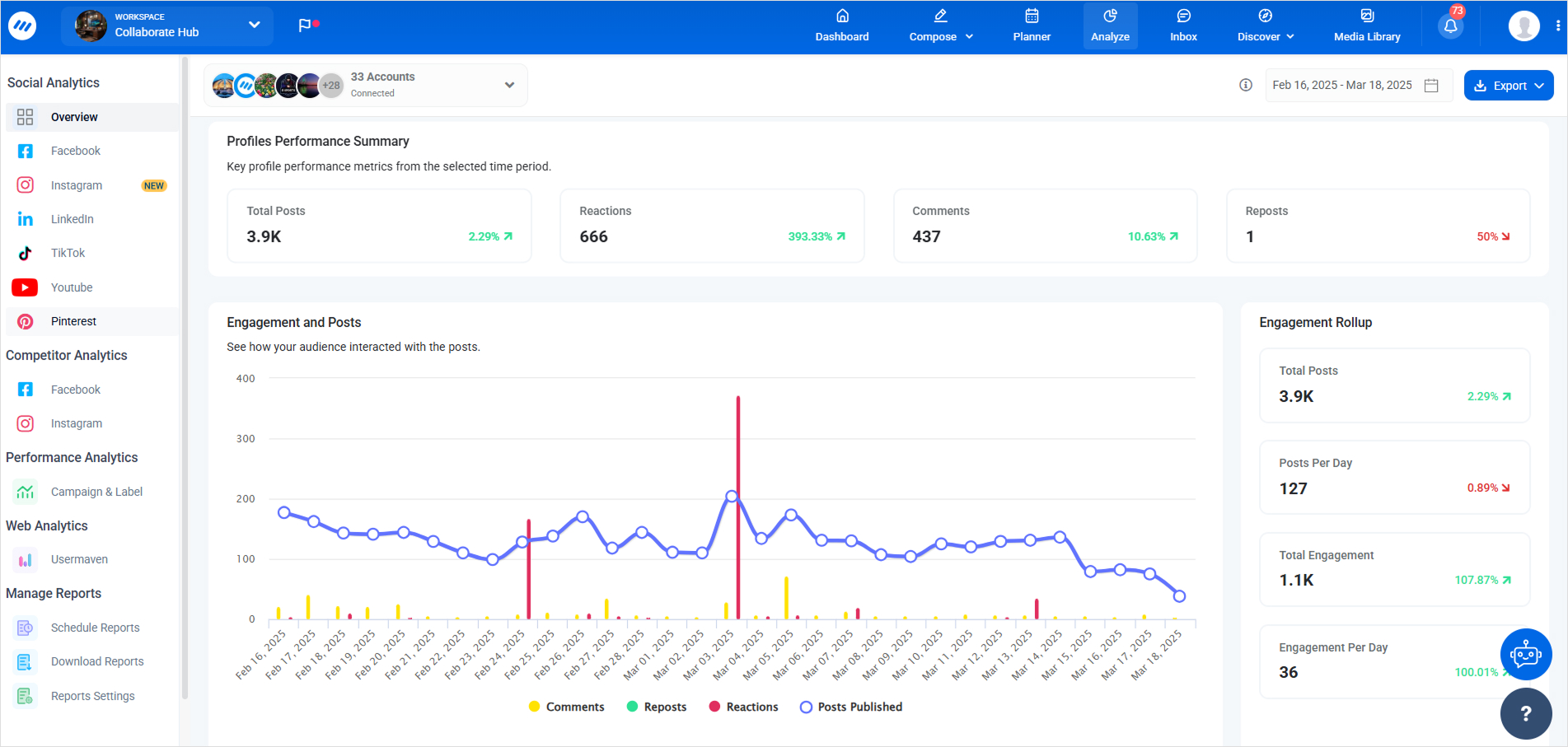
Unified inbox for engagement
ContentStudio pulls in all your social media comments, mentions, and direct messages into a single inbox. You can reply to everything from one place (Facebook comments, tweets, Instagram DMs, etc.) without logging into each platform. You can also assign conversations to specific team members for follow-up. This ensures no customer inquiry is missed and helps maintain fast response times.

Content discovery and curation
ContentStudio’s discovery engine helps you find trending content to share. You can search by keyword or topic to view popular articles, videos, and posts, and easily share them on your pages. This lets you keep your social feeds active with relevant third-party content, even when you don’t have time to create something new. As one user noted, it’s “super easy to find amazing relevant content to share with your audience” using the platform. Curating industry news and stories in this manner keeps your audience engaged and positions your brand as a trusted source.

Workspaces and approval workflows
ContentStudio enables you to manage multiple brands or clients by separating them into distinct workspaces, each with its own social accounts and content calendar. The platform also supports an approval workflow for team collaboration, enabling team members to draft posts that require approval from a supervisor or client before publication. This ensures quality control. One user noted that ContentStudio “helps me and my team instantly approve posts and gives me control over the content being published.” Defining clear roles and approvals makes collaboration smoother and ensures consistent messaging.
Integrations with popular tools
ContentStudio connects with numerous third-party apps to extend its functionality. For example, it features a built-in Canva integration, allowing you to create or edit graphics directly within the ContentStudio dashboard. It also supports direct posting to Google My Business profilesand offers Zapier integration to automate workflows with other software. These integrations minimize the need to switch between different apps – letting you handle design, publishing, and monitoring all in one place.
Key tips and strategies to implement social media automation
Once you’ve chosen an automation platform, the next step is making sure it’s used effectively. Successful social media automation isn’t just about setting up tools—it’s about building a structured approach that supports your goals, content, and brand voice. Below are some practical tips and strategies to help you maximize the benefits of automation while maintaining an authentic and impactful social presence.
1. Set clear goals
Before diving into automation, be sure to define what you want to achieve on social media. Set specific, measurable objectives – for example, increasing brand awareness, driving website traffic, generating leads, or improving customer service. Clear goals will guide your content strategy and help determine which metrics to track. They also ensure that every automated task serves a purpose.
Align social media goals with broader business objectives (e.g., using social channels to drive sales or foster loyalty). In a 2023 industry survey, more than half of marketers reported that their top questions centered on how to improve sales (29%) or generate leads (25%) through social media. Knowing your priorities (whether it’s sales, engagement, follower growth, or something else) will make it easier to configure automation tools for success.
2. Choose the right tools
Selecting the proper automation platform is crucial. Assess your needs – do you need a simple post scheduler or an all-in-one solution with analytics, social listening, and collaboration features? Research available tools (ContentStudio, Hootsuite, Buffer, Sprout Social, etc.), read reviews and take advantage of free trials to find the best fit.
Look for a tool that supports all the social networks you use and offers the functionalities that matter to you (such as visual content support, team workflows, or integration with other software you use). The right platform will become the backbone of your social media operations – so choose one that matches your workflow and objectives.
3. Create a content calendar
Automation works best when paired with careful planning. Develop a content calendar that maps out your posts days or weeks in advance. This calendar should include what you’ll post, on which platform, and when. By planning, you can ensure a well-balanced mix of content (e.g., promotional, educational, user-generated) and coordinate your posts with key events, such as holidays, product launches, or campaigns.
Utilize your automation tool to implement this calendar, scheduling posts according to your plan. A content calendar not only keeps you organized and consistent but also allows you to visualize your strategy at a glance and proactively fill gaps. It’s much easier to maintain a steady presence when you have an editorial plan to follow rather than scrambling to come up with content on the fly.
Social Media Content Calendar
Stay consistent and organized with Contentstudio’s social media content calendar for marketers and agencies.
Get Started for FREE
4. Mix automation with real-time posts
Don’t rely on automation alone – a healthy social strategy uses both scheduled content and live, in-the-moment engagement. Utilize automation for your routine posts, such as daily tips or curated articles, but remain flexible and prepared to post spontaneously when something timely arises. For instance, you might pause your queue to comment on major industry news or share an unplanned update during a live event.
Additionally, consider doing the things that can’t be automated well, such as replying personally to comments or joining trending conversations with your own perspective. An overly automated feed can feel impersonal – as one guide warns, it may make your brand seem “too robotic and impersonal.” By balancing scheduled posts with authentic, real-time content, you achieve efficiency without sacrificing the human touch that social media audiences value.
5. Use performance data to refine your strategy
One big advantage of automating your social media is the wealth of performance data it produces. But that data is only valuable if you act on it. Make it a habit to review your analytics regularly, such as weekly or monthly. Identify which posts or campaigns are yielding the best results and which aren’t. Then adjust your strategy accordingly – double down on what works, and tweak or drop what doesn’t.
Most social media tools provide easy-to-read dashboards or reports that simplify this analysis. Use those insights to continually improve. Many business leaders say their company’s success will hinge on effectively using social media data to inform strategy In practice, let the numbers guide you: if the data shows a certain type of content or posting time works best, incorporate more of it.
Social Media Analytics
Fine-tune your social media strategy for success with in-depth analytics and white-labeled reports.
Get Started for FREE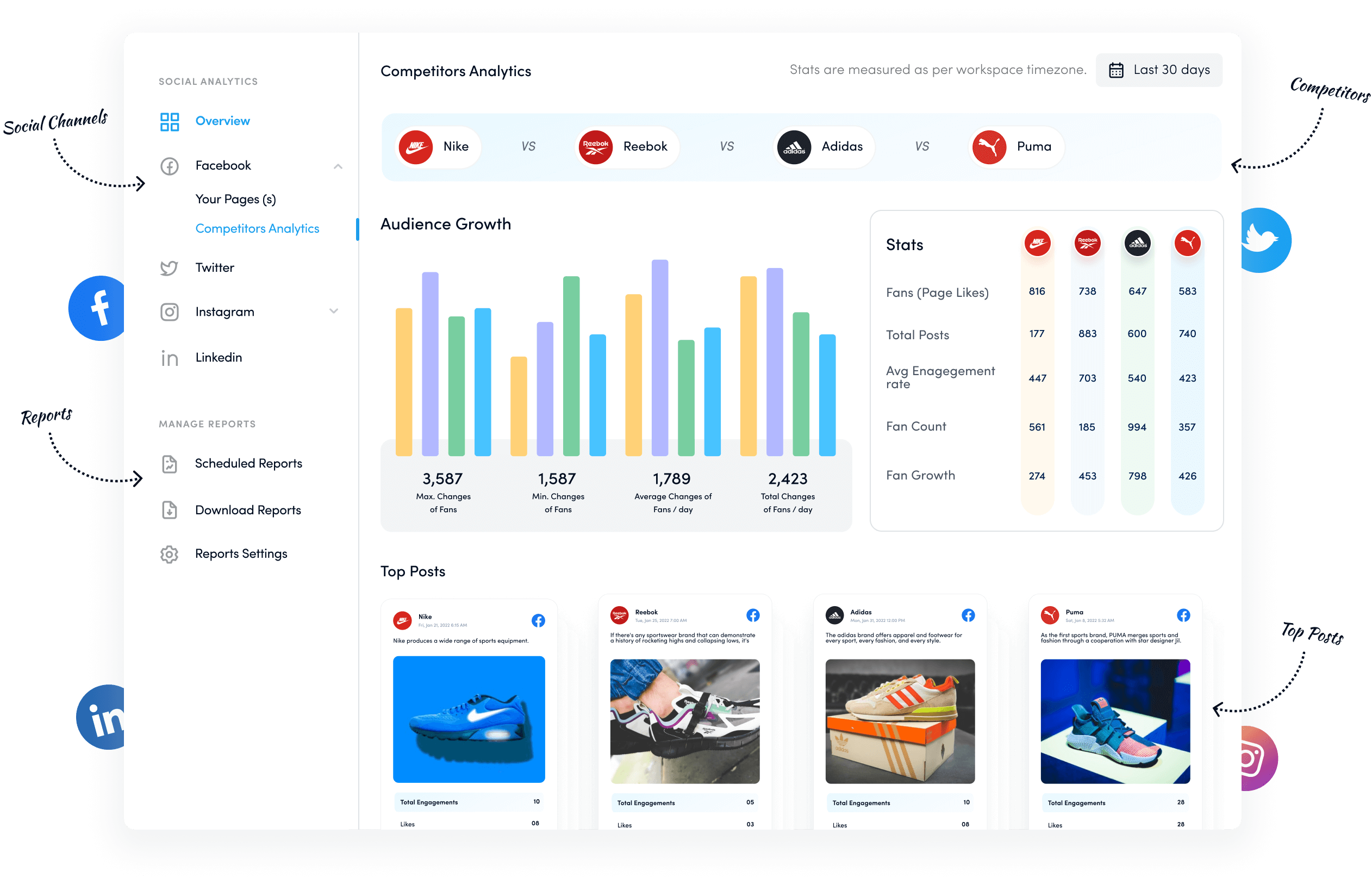
6. Automate reports and approval workflows
Take full advantage of automation beyond just posting. For example, schedule your tool to automatically send you (and stakeholders) a weekly or monthly performance report, rather than manually pulling the numbers. This saves time and keeps everyone aligned on progress.
Similarly, if you work with a team or clients, use your platform’s content approval features. Have drafts routed to the appropriate people for review and sign-off within the system, rather than via back-and-forth emails. This streamlines collaboration and ensures that nothing is sent out without oversight. Embracing these process automation greatly improves efficiency – your team spends less time on admin tasks and more time on strategy and content.
7. Maintain authentic audience interaction
Automation keeps your profiles active, but real human interaction is irreplaceable. Make sure you regularly engage personally with your audience. Respond to comments and messages with a human touch (even if an auto-reply acknowledges them first, follow up with a personal response), comment on your followers’ posts, and showcase your personality in your content.
Don’t let your social presence feel like a bot. Using a warm, authentic tone and addressing people by name can make automated content feel more personal. Remember, followers appreciate genuine engagement – 51% of consumers say the most memorable thing a brand can do on social media is respond. Use the time you save through automation to invest more in conversations, community management, and creative storytelling that builds real connections.
The easiest way to manage and grow your social channels.
Try ContentStudio for FREE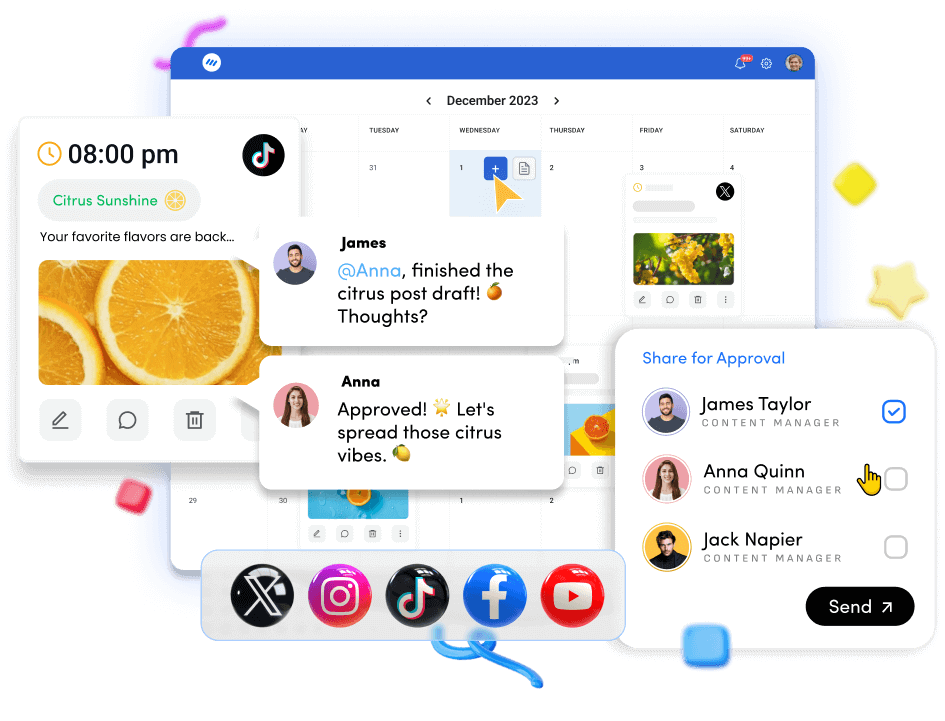
Conclusion
Social media automation is becoming essential for managing an online presence. By automating routine tasks, you save time, maintain consistency, and can scale your efforts. The key is to use automation smartly: set clear goals, choose the right tools, and monitor results to keep your strategy on track. Equally important, remember to add a human touch wherever it counts – creativity, personal engagement, and authentic communication.
In short, let automation handle the busy work so you can focus on higher-level strategy and genuine connection with your audience. Done right, automation becomes a powerful ally that amplifies your social media marketing results.
Frequently asked questions
What is the best tool to automate social media?
The “best” tool depends on your needs. Popular options include ContentStudio, Hootsuite, Buffer, and Sprout Social. Each has its strengths – for example, ContentStudio excels at all-in-one content automation, while Buffer excels at simple scheduling. Consider your budget, required features, and existing networks to determine which tool best suits your needs.
How can automation boost engagement?
Automation helps you post consistently at optimal times, meaning more followers see your content. It can also send quick auto-replies or acknowledgments, keeping conversations warm. By handling repetitive posting tasks, automation frees you up to craft better content and interact with followers – which ultimately boosts engagement.
Is automation good for small business marketing?
Yes. For small businesses with limited time and staff, social media automation is a tremendous asset. It allows a business owner to stay active on social channels without hiring extra help. Automation makes it feasible to maintain a consistent, professional presence and compete with larger brands while saving time.
How do I keep social posts authentic with automation?
Use automation for scheduling and optimization, but maintain oversight. Always review scheduled posts for tone and add personal touches. Crucially, don’t automate all interactions – continue to write some posts and replies manually. By balancing automated posts with genuine, real-time engagement, your social presence will still feel human.
Recommended for you


Powerful social media management software
14-day free trial - No credit card required.
